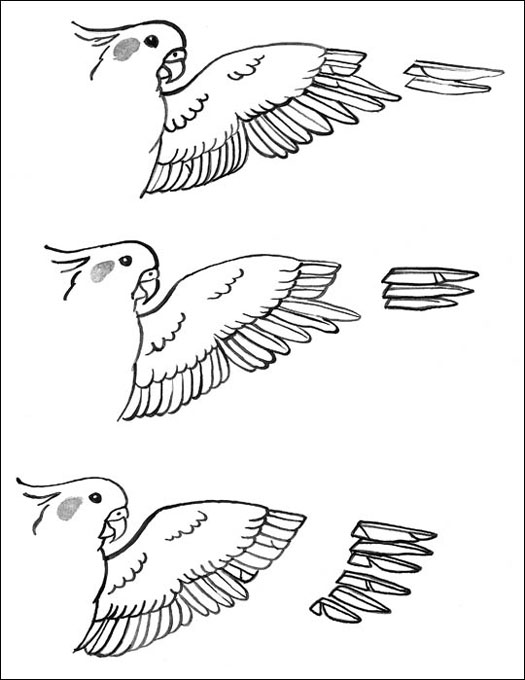
Tropical plants thrive; the humidity is palpable. A waterfall trickles over multi-colored rocks.
Parrots are everywhere - macaws, conures, cockatoos and other birds in colors from white to pink to electric blue. Squawks and beating wings create a cacophony of bird sounds.
Welcome to Gretchen and Brian Baker's basement.
"We ran out of space in our old house," Brian Baker said. "We bought this one for the birds."
Their 10,000 square-foot home is a sanctuary for parrots and other birds whose owners no longer want them, have died or whose lives have changed in ways that make it impossible to keep birds. They range in size from canaries to a 5-pound Hyacinth Macaw - the largest parrot species in the world.
The Bakers care for the birds until they find good homes for them, which can take months, years or may not happen at all.
"Some we won't adopt out," Gretchen Baker said. "They're flock birds. They just get along better with other birds."
The TLC includes a temperature- and humidity-controlled environment, food, toys, cleaning and veterinary care. The Bakers pay all the expenses.
Dan Wayman, who volunteers at the sanctuary, says it's obviously a priority in the Baker's lives. "With the exception of their kids, I don't think they care about anything as much as they do the birds."
They also run a boarding service, Idaho Bird's Nest, for people who leave for a vacation or a weekend and can't take their birds with them. It's what led to the sanctuary.
"We were boarding a bird whose owner wasn't able to take care of him any more," Gretchen said. "She decided that he needed to stay with us. He was the first bird we took in for someone."
That was three years ago. Today, sanctuary birds outnumber boarders. Of some 40 birds there early this month, more than 30 were birds the Bakers saved from situations ranging from needful to desperate. One - they later named him Lucky - had been locked in a shed and left to die.
"His mate did die," Gretchen said. "Their owner didn't want them any more and went off and left them without any food. Lucky clawed his way out, but his mate starved."
Brian Baker rescued him by using a string to close the door of a cage where the aptly named bird had been lured for treat. Neighbors used a fork lift to raise it to Lucky's perch in a tree.
Most cases are less dramatic. Some people give up birds after developing allergies to them. Others move from homes to apartments or assisted-living facilities where tropical birds aren't allowed or are impractical to keep.
Lately, people have been giving up their birds after losing their jobs.
"The economy has really affected us," Brian said. "We've easily tripled the number of birds in the last six months."
People find the sanctuary through word of mouth, and the Bakers check advertisements for people wanting to give birds away. They also get referrals from Zoo Boise and Animals in Distress.
Only three of their birds have been adopted so far. Owners who will care for them properly can be difficult to find and have to meet rigorous standards meant to assure the birds' well being. Legal contracts ensure that the standards are met.












































